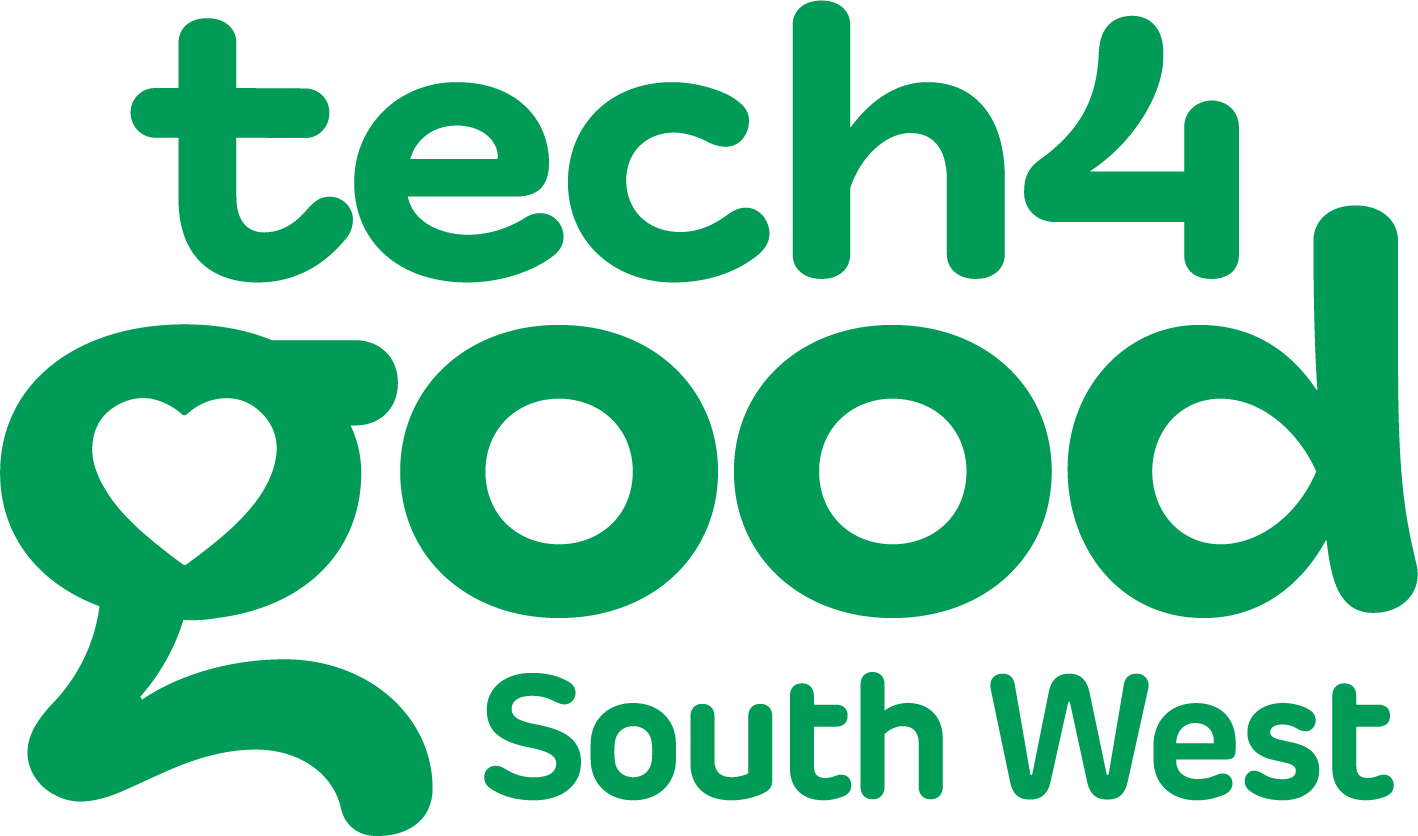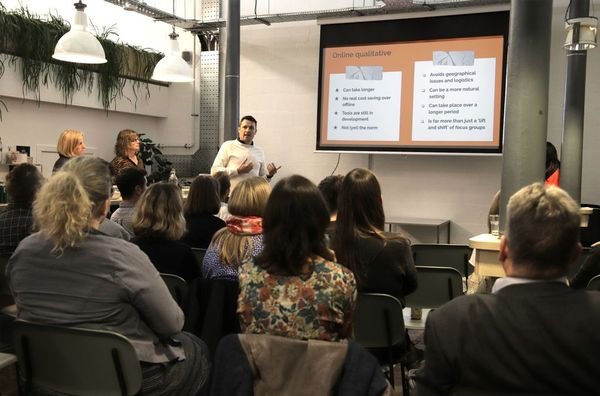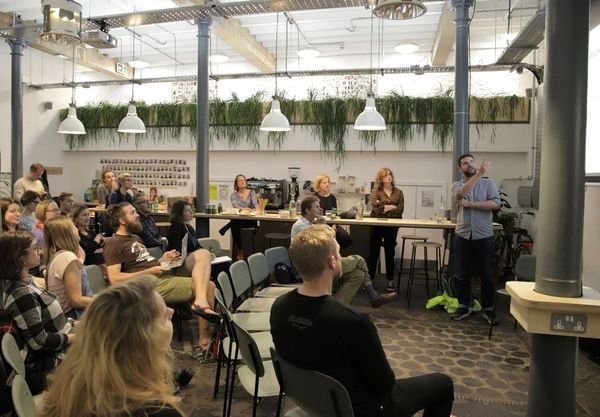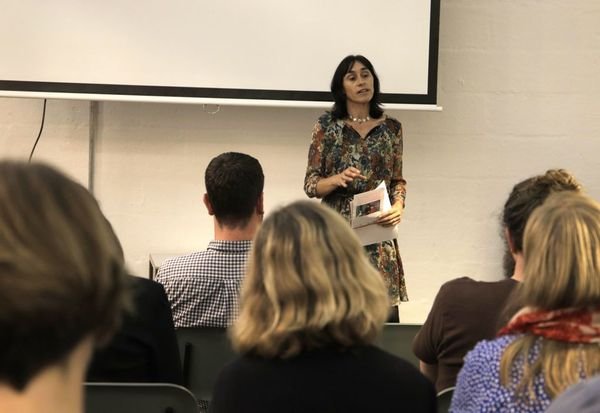Analytics and Insight
On 25th September, Tech4Good South West took over the event space at Framework in Bristol, welcoming along charities, nonprofits, and community projects, as well as tech folks, business leaders and designers, to take a look at all things data, analytics and research.
As we nibbled breadsticks and scrambled to sign in on time, it was clear that many of those who attended understood that the much-uttered terms “data” and “analytics” were intrinsic to their outreach and impact. Data when used right can turn into funding, and evaluating digital campaigns can be a useful tool in future decision-making.
Online market research, from quantitative to qualitative, offline and online
Why should organisations focus on market research, especially if they’re a nonprofit? Enter Gideon Barker from Profundo Insight and Anna Carnibella, independent qualitative researcher and consultant.
Market research, they showed us, can be fundamental to your aim of creating positive social impact; it helps get products or services implemented more robustly and quickly. You can get on and do stuff, tooled with who you’re helping and why, freeing up time and brain space to generate ideas and develop concepts.
Gideon and Anna going through online qualitative research
Many of us in the room had conducted and experimented with market research in some way, from finding a particular need opportunity to testing services. A lot less of us had dabbled in online market research, either quantitative or qualitative.
Gideon and Anna demystified online qualitative research. How can a conversation through a screen yield insights about the very human reasons behind how people behave? While online qualitative research isn’t widely used and has no real cost benefit over offline research, as it is done remotely the conversation can be carried over longer periods of time, and can tap into perspectives that are restricted by geographical logistics.
With a small budget, a more inclusive, transparent and collaborative way of getting answers, online qualitative research proves that a focus on market strategy can tie in positively with social impact.
Gideon and Anna going through online qualitative research
Top tips for getting insight from web analytics data
Strictly sticking to the allotted time on the alarm clock, the floor turned to Ryan Webb from Search Star, who made it clear how to extract meaningful insight from a mass of web analytics data. The amount of stuff Google analytics is now counting, from various different points, is extensive — even on small websites.
Website analytics tools, such as Google Analytics, allow you to collect and report on an increasing amount of data in a faster, more user friendly and often automated way. But unless we examine the resulting data intelligently, the development of tools is simply enabling a faster and easier way of producing reports that mean nothing.
Ryan’s advice? Tackle your site’s web analytics in a way that ties into the larger vision for your project: what are your primary KPIs? What metrics matter to you and why? You can get clarity on why you’ve logged onto the Google Analytics dashboard in the first place by using its goal setting tool, aligning both your activity and your stakeholder’s expectations easily.
Small organisations and charities might have been wondering, after gathering all that, what to do with it. Asking the ‘so what?’ question is important, and can tie in neatly with more of the core values attached to your project or company vision.
Why should charities be prioritising data?
If the numbers were starting to get remote, then Chloe Parker from Core Insights got us back to practical matters by demonstrating why charities should be prioritising data. Social impact should be measurable and trackable, Chloe stressed. This becomes easier to understand once you know what your targets are and how you’re going to reach them.
For the organisation who’s reason for being is social good, a report showing the raw data on that impact can be vague and untranslatable. At the same time, a report is crucial for securing further funding.
Chloe broke down what she called the ‘impact wheel’ by stressing that stakeholders — board members, supporters, funders — will only want to see data presented clearly. Armed with effective data storytelling, you can then get on with influencing decisions, using data to uncover areas of impact you aren’t currently focusing on, creating impact with depth in the process.
In the end, your nonprofit’s or enterprise’s outcomes are only as good as the data you hold. If a database is robust and easy to report, your job will be much easier.
Uncovering data talent in your organisation
The last 15 minute slot turned to those who actually handle all of this data. Alex Cosgrove from ADLIB Recruitment reminded us of the astonishing proliferation of data, and the jobs that come with it. By 2020, there will be around 40 trillion gigabytes of data. (Yes, that’s 40 zettabytes!)
Looking internally at your organisation to upskill those who already have the foundational traits for a new role in data can be a two-fold positive: those handling the data will be informed of your values already, and your organisation can become more tech savvy from within.
Those of us working in spreadsheets and customer databases just need a nudge, and with the data wrangling tools Alex outlined — such as SQL and VBA — there isn’t one kind of data role. Uncovering a new talent in your organisation can be an interesting and empowering shift, as well as a necessary step to make sure your organisation keeps afloat of its digital transformation.
Community shoutouts and calls for collaboration
A Tech For Good event wouldn’t be complete without opening up the space for anyone to take part in a community shoutout, offer a hand of support or let our network know what projects are coming up.
From collaborative projects for tackling period poverty with Open Data Bristol, to data migration help at Southville Community Centre, the return of Bristol Giving Day and even a call out for technologists interested in beak recognition technology from Slimbridge Wetlands Centre, it was an eclectic mix. You can read more of the shoutouts, download the talks and how to get involved, on our Meetup page.
The evening demonstrated how the accumulation of data can be harnessed for small, local projects as well as larger, wholesale movements for social impact, rather than solely a tool for manipulation or advertising.
The last of breadstick crumbs brushed away, and it was another evening of forming connections, purposeful interactions between the tech and third sectors, and conversations that normally wouldn’t have taken place.





